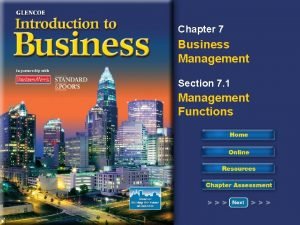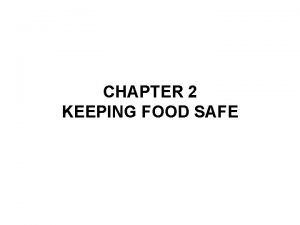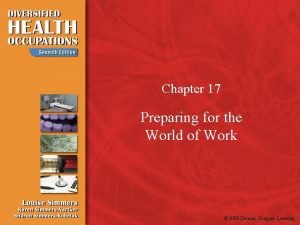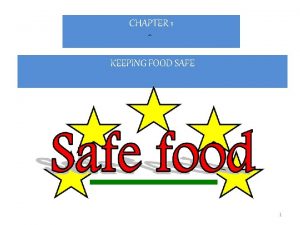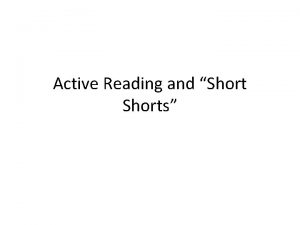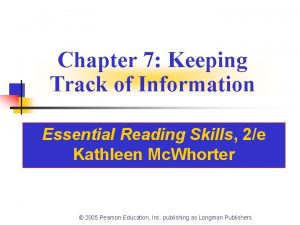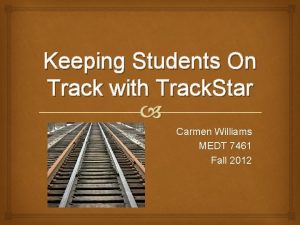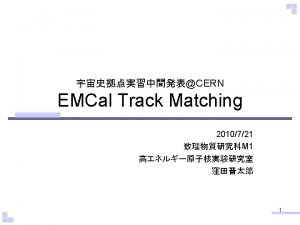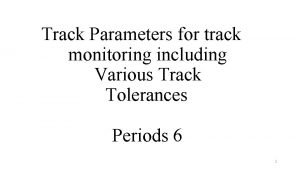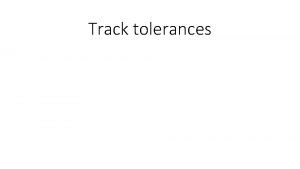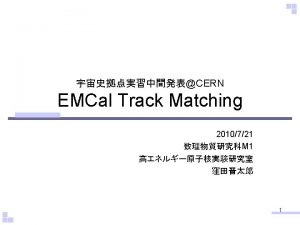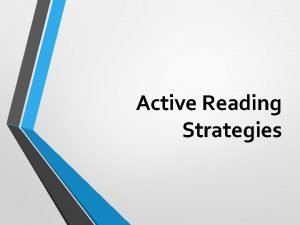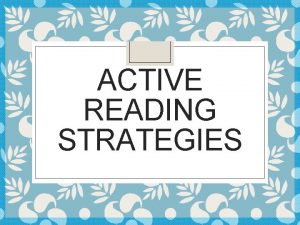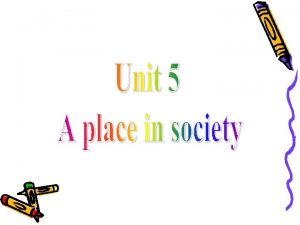Chapter 6 Keeping Track of Information Active Reading












- Slides: 12

Chapter 6: Keeping Track of Information Active Reading Skills, 1/e Kathleen Mc. Whorter Power. Points by Gretchen Starks-Martin © 2005 Pearson Education Inc. Publishing as Longman

Five Ways to Keep Track of Information 1. Highlighting 2. Marking 3. Outlining 4. Mapping 5. Summarizing © 2005 Pearson Education Inc. Publishing as Longman

Highlighting Effectively 1. Read a paragraph or section first. 2. Highlight important portions of any topic sentence. 3. Be accurate. 4. Highlight the right amount. (No more than 20 to 30 percent of the material. ) © 2005 Pearson Education Inc. Publishing as Longman

Marking to Record Ideas 1. Circle the words you do not know. 2. Mark definitions with “def. ” 3. Make notes to yourself. (“example, ” “test question, ” “reread, ” “ask instructor. ”) 4. Put question marks next to confusing words or passages. © 2005 Pearson Education Inc. Publishing as Longman

Outlining I. Major topic A. First major idea 1. First key supporting detail 2. Second key supporting detail B. Second major idea 1. First Key supporting detail a. Minor detail or example b. Minor detail or example 2. Second key supporting detail II. Second major topic A. First major idea © 2005 Pearson Education Inc. Publishing as Longman

Outline of an Essay: Your Friend’s Vacation in San Francisco I. Favorite Places A. Chinatown 1. Restaurants and markets a. Fortune cookie factory b. Dim sum restaurants 2. Museums a. Chinese Culture Center b. Pacific Heritage Museum B. Fisherman’s Wharf 1. Pier 39 a. Street performers b. Sea lions sunning themselves on the docks 2. Ghiradelli Square © 2005 Pearson Education Inc. Publishing as Longman

Suggestions for Outlining 1. Don’t worry about following the outline format exactly. 2. Use words and phrases or complete sentences. 3. Use your own words, and don’t write too much. 4. Pay attention to headings. © 2005 Pearson Education Inc. Publishing as Longman

Mapping: A Visual Method of Organizing Information 1. Identify the overall topic or subject. 2. Identify major ideas that relate to the topic. 3. As you discover supporting details that further explain an idea already mapped, connect those details with new lines. See images 6. 1 to 6. 4 in your book for examples of maps. © 2005 Pearson Education Inc. Publishing as Longman

Example of Mapping How children learn to manage emotions They learn how they’re supposed to feel. They learn how to to show or hide change their feelings. © 2005 Pearson Education Inc. Publishing as Longman

Example of Mapping Process: How to Prepare A Garden Bed Find a sunny spot. Remove weeds, rocks, and debris. Loosen soil and dig about 12” deep. Mix compost to a depth of about 6 -8”. © 2005 Pearson Education Inc. Publishing as Longman Smooth out lumps with rake and then plant!

Summarizing: A Brief Statement that Pulls Together the Most Important Ideas You Have Read 1. Underline each major idea in the material. 2. Write one sentence that states the writer’s most important idea. 3. Use your own words. 4. Focus on the author’s major ideas, not on supporting details. 5. Keep your summary ideas in the same order as in the original material. © 2005 Pearson Education Inc. Publishing as Longman

Visit the Companion Website http: //www. ablongman. com/mcwhorter © 2005 Pearson Education Inc. Publishing as Longman
 Describe the overall purpose of management.
Describe the overall purpose of management. Shana is keeping track of the expenses as deductions
Shana is keeping track of the expenses as deductions Keeping your career on track
Keeping your career on track While reading activities
While reading activities Chapter 2 keeping food safe
Chapter 2 keeping food safe Chapter 18 preparing for the world of work
Chapter 18 preparing for the world of work Chapter 11 keeping a healthy weight study guide answers
Chapter 11 keeping a healthy weight study guide answers Keeping food safe chapter 1
Keeping food safe chapter 1 Boolean operators
Boolean operators Active transport
Active transport Primary active transport vs secondary active transport
Primary active transport vs secondary active transport Feeding the world active reading
Feeding the world active reading Goshgarian critical reading
Goshgarian critical reading
